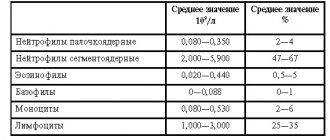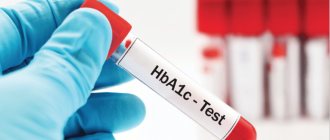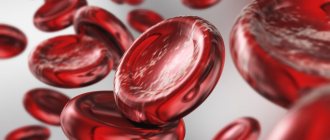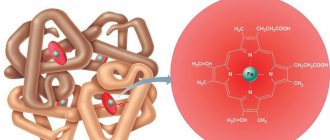Being in the mountains
At an altitude of more than 2,400 m above sea level, the air is very thin and contains little oxygen. Therefore, when climbing, unprepared people develop Acute mountain sickness / US National Library of Medicine, which can lead to death without medical help. Complications can be avoided by living at altitude for some time. Then the body will adapt to the new conditions, and the High Hemoglobin Count / Cleveland Clinic level of hemoglobin in the blood will increase. The same process is observed in those who constantly live in the mountains.
What to do
This adaptive response is necessary for survival. Therefore, there is no need to do anything.
Indications for prescribing a test for hemoglobin levels
A general blood test is carried out on a regular basis by every person who monitors their health to monitor the condition of the body and prematurely identify hidden diseases that have not yet begun to manifest themselves. It is important to start their timely treatment. Typically, such an analysis is performed once a year; much more often, for preventive purposes, blood is donated by pregnant women to prevent oxygen starvation of the fetus (hypoxia) and a sharp deterioration in the well-being of the expectant mother.
As a basic study, blood sampling for a general analysis is carried out during hospitalization and before surgery to determine the condition of the body and prevent any complications. It is equally important to carry out analysis during treatment to monitor the effectiveness of the chosen drug strategy.
Also, the reason for referral for analysis for a more detailed study of hemoglobin levels are the patient’s complaints: increased drowsiness, fatigue, lack of strength, pale skin. All this can indicate not only a low level of protein, but also the presence of a serious disease: various types of anemia, diseases of the hematopoietic system, and even the presence of cancerous tumors.
- Blood test for leukocytes, leukocyte norms, preparation for analysis
- RDW in a blood test, what is it, norms, preparation for the test
Dehydration
With vomiting, diarrhea, heavy sweating, frequent urination or lack of water in the body, a person becomes dehydrated Dehydration / US National Library of Medicine. Because of this, the blood thickens and becomes more concentrated. As a result, High hemoglobin count / Mayo Clinic hemoglobin levels increase.
What to do
We need to fill the water deficit. For mild dehydration, Dehydration / US National Library of Medicine is enough to simply drink plenty of water. In more serious situations, rehydration solutions are also used. They contain salts that help retain fluid in the body. And in severe cases, patients are given IVs.
Normal hemoglobin level in blood
It cannot be said that hemoglobin levels are individual and each person has their own normal limits. But at the same time they depend on age, gender and certain physiological conditions. For example, pregnant women normally have slightly lower hemoglobin levels than everyone else, since their body works for two. On average, a healthy person's hemoglobin should range from 110 to 160 g/l.
So for a pregnant woman the norm is 110 g/l, the same norm for a newborn child. The baby takes the level of this protein from his mother, since it begins to be produced independently in the body only after 6 months of age. In adult women, hemoglobin can vary from 120 to 140 g/l (this often depends on diet and lifestyle).
For adult men, the norm is considered to be higher than for women. This indicator should be in the range from 130 to 160 g/l. It is also worth noting a possible decrease in hemoglobin levels in older people and in people suffering from alcoholism. This phenomenon is physiological in nature and will not be a deviation from the norm, it only indicates a lack of B vitamins.
Chronic obstructive pulmonary disease
Pathology develops with chronic bronchitis or emphysema. In COPD/Mayo Clinic obstructive disease, the bronchi are blocked and air flow is obstructed. As a result, gas exchange is disrupted, and red blood cells cannot be saturated with oxygen, so the body increases the synthesis of hemoglobin.
What to do
The underlying disease needs to be treated. Doctors usually recommend COPD/Mayo Clinic to quit smoking or change jobs if you have to deal with a lot of dust or hazardous gases at work. Emphysema/Mayo Clinic also prescribe medications that help dilate the bronchi, improve gas exchange in the lungs and reduce inflammation. Sometimes antibiotics are used.
Some people have to breathe oxygen through a mask, and in severe cases they even undergo lung transplant surgery or remove pathological tissue areas.
Blood test for hemoglobin at MedArt
The laboratory of the MedArt medical center is equipped with an automatic hematology analyzer DxH 500 Beckman Coulter, manufactured in the USA. This equipment is characterized by increased accuracy when conducting research. The medical staff of our center is highly qualified and well prepared for their work. The result of a general blood test will be 100% reliable and will not raise any doubts in you.
With us, you can take a general (clinical) blood test without spending a lot of time and effort on getting a referral, and then finding out the test results. We guarantee fast and high-quality hematological diagnostics. You can get results within a day, and in emergency situations, according to indications, within 1 hour.
A comfortable and calm environment will help you relax, in this case the test results will not be distorted due to stress or nervousness.
Heart diseases
A person's hemoglobin may increase due to heart failure. This is a condition in which the heart is unable to perform its function normally. Therefore, less blood and oxygen enters the tissues, and the body tries to make up for the deficiency. The following pathologies Heart failure / Mayo Clinic lead to this condition:
- heart attack and coronary heart disease;
- high blood pressure;
- damage to heart valves;
- cardiomyopathy - damage to the heart muscle;
- myocarditis - inflammation of the heart muscle;
- arrhythmia;
- congenital heart defects;
- other diseases that can affect the cardiovascular system, such as hyperthyroidism, hypothyroidism, HIV, diabetes.
What to do
It is necessary to treat the disease that led to heart failure and increased hemoglobin. Doctors usually prescribe medications, but if defects occur, surgery may be necessary.
Functions of hemoglobin
Red blood cells are important because they enable the “respiration” of cells and tissues of the body. But they only serve as a kind of transport that helps carry vital oxygen; in fact, the main respiratory function is performed by protein - hemoglobin, which red blood cells are saturated with. It is he who gives them their color and interacts with oxygen, attaching it to itself and delivering it to the tissues, and then taking carbon dioxide from the cells. It also plays a significant role in maintaining the acid-base balance in the body. It is noteworthy that immediately after their creation, red blood cells are not yet saturated with hemoglobin; this happens after they enter the blood. Normally, a mature red blood cell contains about 400 million hemoglobin molecules.
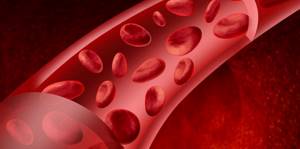
Since hemoglobin is responsible for one of the most important functions - respiratory, its indicators are very important; in case of deviations, hypoxia begins - oxygen starvation, which has a very negative effect on the body as a whole. At the same time, it must be remembered that the deviation of its indicators beyond the norm is not an independent disease, but at the same time serves as its consequence; this always prompts a more in-depth study of the state of health to identify the real cause of such a deviation and prevent possible consequences.
Separate studies of hemoglobin are not carried out; its quantity is studied as part of a general (clinical) blood test, where other blood components - red blood cells, leukocytes and platelets - are analyzed in combination with hemoglobin.
Polycythemia vera
This is a form of Polycythemia vera / Mayo Clinic blood cancer in which the bone marrow produces too many red blood cells, which causes an increase in hemoglobin. The disease is rare and usually occurs in people 50–75 years old.
What to do
If, after a blood test, the doctor suspects polycythemia, he will refer the person to a hematologist. This specialist will prescribe Polycythemia Vera / Cleveland Clinic medications or perform phlebotomy or phlebotomy. It is done to reduce the number of red blood cells and hemoglobin. The procedure is repeated every three months.
High hemoglobin treatment and description of the causes of the disease
High hemoglobin. What it is? Concepts and definitions.
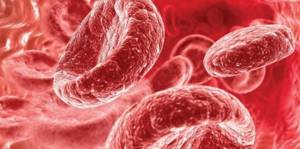
High hemoglobin is an overestimated level of hemoglobin in the blood. The hemoglobin level in the blood of a healthy woman is 120-140 g/liter of blood, and that of a healthy man is 135-160 g/l. Accordingly, a high hemoglobin level is more than 150 g/l for women and more than 170 g/l for men.
This disease can manifest itself in the form of dysfunction of the genitourinary system and pale skin color throughout the body.
The disease can appear regardless of a person's age. Including children. The cause may be, for example, an excess of glucose in the body and blood thickening.
Treatment of any disease should not be postponed. If something in your body goes wrong, there is a reason for it. We will consider further what signals the body can tell you that you are developing an increased level of hemoglobin.
Symptoms that indicate an increased level of hemoglobin in a person’s blood.
Here's what you should pay attention to. As mentioned above, if you exhibit dysfunctions of the genitourinary system and pale skin color throughout your body, it means that it is possible that you have increased hemoglobin. A more complete list of symptoms is as follows:
- Pale skin color
- Disorders of the genitourinary system
- Vision problems
- Partial or complete loss of appetite
- Increased drowsiness and fatigue of the body
- Blood thickening
Thus, if some or all of the symptoms present in the lists appear in you, then it’s time to take care of your health.
Remember, it is easier and faster to treat a disease in the early stages, when it has not yet taken root deep into your body.
Don’t let it go and don’t leave it to chance or “maybe it will go away on its own.” Undoubtedly, the body's resources are great. And Tibetan medicine is for the body to cope with the disease itself.
However, in the conditions of our modern life and without knowing the true causes of the disease, you should contact a specialist and undergo a free diagnosis in our clinic. At the very least, you will know your exact diagnosis, the cause of the disease and recommendations for a quick recovery.
Let's continue the research, and first let's find out where the roots of all diseases come from, in particular increased hemoglobin.
The root cause of increased hemoglobin. Where are the roots of all human diseases?
Our world is diverse and complex for some, but simple and great for others. The ability to behave, to subordinate thoughts to one’s will, to manage one’s condition in different situations, to launch the correct biochemical processes, allows a person to have strong energy and strong immunity, and therefore resistance to any diseases.
The integrity of the body begins to collapse with psycho-emotional factors that affect us every day. If a person knows how to cope with them, processing any emotional surges towards a positive shift forward for himself, he will be able to react easily to any uncomfortable situation, remain in good health and, moreover, develop his energy potential.
Otherwise, under the influence of a crazy pace of life, stressful situations at work, at home or on the road, a negative energy charge begins to accumulate, gradually destroying a person’s energy shell.
First, this affects a person’s psychological health; later, the destruction moves to the physical level, where internal organs begin to suffer and various sores appear.
Let's move on directly to the reasons and factors that contribute to the appearance of high hemoglobin.
“To cure someone, you must first make a correct diagnosis. And in order to be able to make a correct diagnosis, you need to have not only thorough medical knowledge, but also a genuine interest in curing the disease. It’s not enough to be a doctor, you also need to be able to help.”
Bertolt Brecht
Causes of increased hemoglobin. What can have a direct impact on the development of the disease?
We said above that the disease can be triggered by an excess of glucose in the body and thickening of the blood. There are other reasons.
The main reasons for increased hemoglobin include the following:
- Excess glucose in the body
- Increase in hemoglobin in blood plasma
- Increase in the volume of red blood cells in the blood serum
- Poor intestinal permeability
- Excess of B vitamins in the body
- Cardiovascular problems
Why can a disease be resistant to treatment, and when everything seemed to have passed, a relapse occurs? Because at the diagnostic stage the doctor did not determine the cause of the disease.
Treating symptoms means driving the disease even deeper inside, where it will affect more and more new areas, developing a whole “network” of associated diseases.
And, one “fine” day, they will make themselves felt with all their bouquet, which will also be joined by side effects from medications. Is it worth it? Of course not. There is always a choice
Next, we will consider the approach of Tibetan medicine to the issue of treating high hemoglobin.
Treatment of high hemoglobin using Tibetan medicine.
Rapid restoration of the body using Tibetan methods occurs thanks to methods of external and internal influence. Everything that can contribute to rapid recovery is taken into account. Lifestyle and nutrition also play an important role here.
During the free pulse diagnostics, you are given an accurate diagnosis, your predominant constitution is determined, which is one of the most important points for setting up the correct treatment, the causes of the disease, concomitant diseases are determined, and based on these data, treatment is prescribed.
Again, nutrition and lifestyle play an important role in the healing process. Therefore, it is important to know your natural constitution and the state of affairs in general. And based on this data, determine the necessary diet, with the presence of plenty of fluids and the exclusion or limitation of foods that are not suitable for you by nature.
The main external influences include the following procedures:
- Acupuncture
- Moxibustion therapy
- Stone therapy
- Tibetan massage
- Vacuum therapy
- Hirudotherapy
- And others.
In combination with herbal medicine, these procedures provide a tremendous healing effect and allow you to quickly relieve pain and alleviate the condition.
Properly selected herbal remedies have an immunomodulatory, antibacterial and anti-inflammatory effect, harmonizing the state of the body’s internal systems.
An integrated approach is the basis of Tibetan medicine. External influence by the above procedures leads to the following:
- Normal hemoglobin levels in the blood are restored
- Improves blood functionality
- Stagnation is eliminated
- Increases immunity
- Relieves pain and discomfort
- Concomitant diseases go away
- The general condition of the body improves
- Pale skin color goes away
- The functions of the genitourinary system are restored
- Vision improves
- The former appetite returns
- Increased drowsiness and fatigue of the body are reduced
Tibetan medicine has helped many patients regain lost health. Even in those cases when ordinary doctors refused the patient, saying that he could no longer be helped, Tibetan medicine helped.
Not because she has some kind of magic pill, but because she has enormous knowledge about human nature and its interaction with this world. This experience has been accumulated over thousands of years and is now quickly gaining popularity due to its amazing results.
Without chemicals, antibiotics, painful procedures and surgeries, we manage to get people back on their feet, significantly improving their condition.
People also come to us to prevent diseases. Relax, unload your emotional state, raise your vitality and restore your energy.
After complex procedures, a person gains harmony with himself and the outside world for a long time. He simply glows with love, energy and life.
Therefore, if you have any health problems, come, we will help you.
Health to you and your loved ones!
Bibliography:
Blumenfeld L. A. Hemoglobin // Soros educational journal. – 1998. – No. 4. – P. 33-38.
Perutz M. Hemoglobin molecule // Molecules and cells. – M., 1966. – P. 7-29.
Human biochemistry / R. Murray, D. Grenner, P. Mayes, V. Rodwell. T. 1. – M.: Mir, 1993. – P. 52-62,71, 98-100, 123-124, 335-366.
Leninger A. Fundamentals of biochemistry / Ed. V. A. Engelgard. – M.: Mir, 1985. – T. 1-3. – pp. 27-123, 187-225, 768-771.
Irzhak L. I. Hemoglobins and their properties. – M.: Nauka, 1983. – 150 p.
Starodub V. F. Heterogeneous hemoglobin system. Synthesis of hemoglobin of individual types in ontogenesis and in pathology of the body // Advances in modern biology. – 1986. – No. 3.
Starodub N. F., Nazarenko V. I. Heterogeneous hemoglobin system: structure, properties, synthesis, biological role. – Kyiv: Nauk. Dumka, 1987. – 198 p.
Pavlov A. D., Morshchakova E. F. Regulation of erythropoiesis: Physiological and clinical aspects. -M.: Medicine, 1987. – 272 p.
WalkinsonD. Principles and methods of diagnostic enzymology. – M.: Medicine, 1980.
Todorov Y. Clinical laboratory studies in pediatrics // Sofia: Medicine and Physical Education, 1968. – P. 278-310.
Branden C., Tooze J. Introduction to a protein structure // Garland Publishing, 1991.
Klotz IM, Haney DN, King LC Ritional approaches chemotherapy agents: Antisickling // Science. -1981. – R. 219.
Biochemistry / Ed. E. S. Severina. – M.: Publishing house. house “GEOTAR-MED”, 2003. – pp. 46-55.
Irzhak L. I., Gladilov V. V., Moiseenko N. A. Respiratory function of blood under conditions of hyperoxia. -M.: Medicine, 1985. – 176 p.
Guide to Hematology / Ed. A. I. Vorobyova, Yu. I. Lorie. – M., 1979.
Ovchinnikov Yu. A. Bioorganic chemistry. – M.: Education, 1987. – P. 120, 205-207.
Elliot V., Elliot D. Biochemistry and molecular biology. – M.: Publishing House of the Scientific Research Institute of Biomedical Chemistry of the Russian Academy of Medical Sciences, 2000. – P. 311-321.
Wintrobes Clinical Hematology / GR Lee, TC Bithell, J. Foerster et al. – Philadelphia: Lea end Febiger, 1993.
Dashtayants G. A. Clinical hematology. – Kyiv: Health, 1973. – P. 45-72.
Aslanova N.K. Some erythrocyte parameters in patients with chronic hypoxia of various origins. – Clinical medicine. – 1991. – No. 4. – P. 56-58.
Gutoranov V. G. Modification of the method for determining the concentration of hemoglobin in the blood // Laboratory work. – M., Medicine. – 1983. – No. 2. – P. 9-11.
Agapova A.,. Kriventsev Yu. A., Dyakova O. N. Development of a diagnostic immunodiffusion test system for fetal hemoglobin // Proteins - markers of pathological conditions: Proceedings of the conference. young scientists from international participation. – Astrakhan – Moscow, 2001. – P. 101-103.
Postnatal changes in oxygen affinity of rat blood / DS Dhindsa, J. Netcalf, DW Blackmore, RD Koler // Comp. Biochem. and Physiol. A. – 1981. – 69 (2). – P. 279-293.
Zaichik A. Sh., Churilov L. P. Fundamentals of pathochemistry. – St. Petersburg: Elbi-SPb., 2000.
Laboratory research methods in the clinic / Ed. prof. V.V. Menshikova. – M.: Medicine, 1987. – P. 108-111.
General and medical genetics. Lectures and tasks / R. G. Zayats, V. E. Butvilovsky, I. V. Rachkovskaya, V. V. Davydov. – Rostov n/d.: Phoenix, 2002.
Shevchenko V. A., Topornina N. A., Stvolinskaya N. S. Human Genetics: Textbook. for students higher textbook manager – M.: Humanite. ed. , 2002.
Signs and consequences of increased hemoglobin
With a high level of hemoglobin in the blood, women may have no symptoms at all, but with a long and high value along with other diseases, the patient may have vague symptoms:
- constant fatigue
- desire to sleep,
- lethargy,
- loss of appetite,
- sleep problems,
- aches in joints and bones,
- high blood pressure,
- itching of the skin, particularly after showering and bathing,
- stomach ache,
- instant bruising and easy bruising.
All these symptoms disappear externally. But the most serious of them take place inside the body. There is an increase in the coagulability of the blood space, an increase in its concentration and a reduction in the speed of movement in the body. Because of this, the internal organs do not receive proper nutrition. If this condition is neglected, blood clots and plaques can form, which cause heart attacks and strokes.
Diagnostic methods and preparation
Diagnosis of hemoglobin level is mandatory when conducting a general blood test. The duration does not exceed 1 day. The biomaterial for analysis is venous or capillary blood. To obtain the most reliable results, you must follow the preparation recommendations:
- eliminate fatty and fried foods for 1 day;
- blood is donated strictly on an empty stomach, the last meal taken at least 8 hours before;
- within half an hour, physical and emotional stress is limited;
- You must not smoke for 1 hour.
Interpretation of results and norm
Important: the interpretation of the data obtained should only be carried out by the attending physician.
Otherwise, the risk of incorrect diagnosis and selection of treatment methods that will worsen the patient’s condition cannot be excluded.
Reference (normal) values are selected individually for each patient, taking into account gender, age and menstrual cycle.
| Floor | Age | Hemoglobin norm, g/l |
| Both | 0 – 14 days | 135-200 |
| Up to 1 month | 100-170 | |
| 1-2 months | 95-130 | |
| 2-4 months | 100-140 | |
| 4-6 months | 110-140 | |
| 6-9 months | 100-150 | |
| 9-12 months | 115-145 | |
| 1-5 years | 110-150 | |
| 5-10 years | 115-145 | |
| 10-12 years | 120-160 | |
| Man | 12-15 years | 120-160 |
| 15-18 years old | 120-170 | |
| 18-45 years old | 130-170 | |
| 45-60 years | 140-175 | |
| Over 60 years old | 120-175 | |
| Woman | 12-15 years | 110-150 |
| 15-18 years old | 120-155 | |
| 18-45 years old | 115-160 | |
| 45-60 years | 120-160 | |
| Over 60 years old | 110-170 |
It should be noted that even with a normal quantitative content of red blood cells in the blood, a deviation from the reference values of the Hb indicator may be observed.
A small one-time deviation from the norm is not a cause for concern. In other words, if hemoglobin 160 is detected in a patient under the age of 18, then there is no need for additional laboratory and instrumental examinations.
Despite the difference in normal values for different sexes, hemoglobin 150 g/l is considered the optimal value for both women and men.




